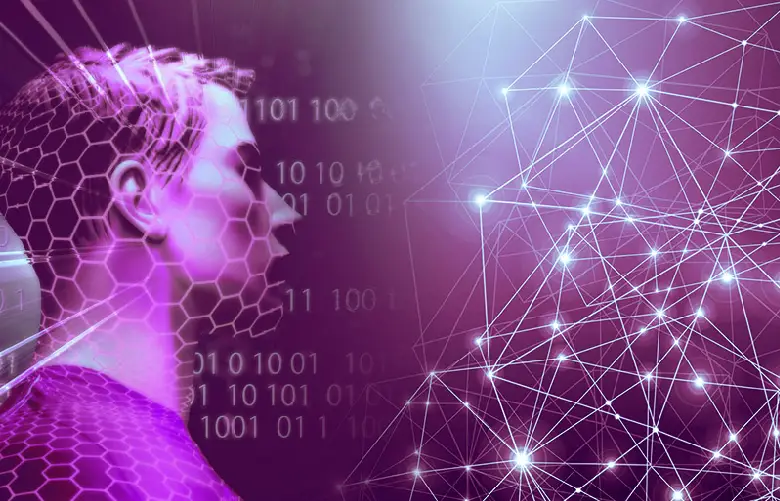CNN, or Convolutional Neural Network, is a crucial aspect of deep learning. Anyone interested in machine learning and wanting to take on image recognition or object detection operations has to learn what a convolutional neural network is.
However, beginners may find it difficult to comprehend the functioning of CNN in deep learning. This is where this comprehensive guide on convolutional neural network algorithms will aid. Here, you’ll learn not only what a convolutional neural network is but also its layers, benefits, applications, and more.
So, read till the end.
What are Convolutional Neural Networks?
A convolutional neural network, ConvNet, or CNN in deep learning, is a special class of deep neural networks.
Visual imagery analysis is the most common application of this machine-learning algorithm. This algorithm is capable of taking in any input image and allocating significance to different objects or elements in the image. By doing so, a convolutional neural network can easily distinguish one object from another.
Although you may find various other neural network types, CNN in deep learning is the go-to option to identify and recognize objects. Thus, convolutional neural networks have emerged as an ideal choice for applications necessitating image recognition (e.g., facial recognition) in addition to computer vision (CV) operations.
Want to learn what an AI expert system is? Check this blog on the Expert System in Artificial Intelligence from HeroVired.

Get curriculum highlights, career paths, industry insights and accelerate your data science journey.
Download brochure
Explanation of Neural Networks
Before delving into the components, benefits, and applications of convolutional neural networks, let’s brush up on what neural networks are.
Whether it’s a large-sized corporate AI system or a simple perceptron, every neural network comprises nodes that emulate and model oneself on the human brain neurons. Just like human brain cells, these nodes are also tightly linked to one another.
However, these neurons are managed and classified into independent neural network layers. Feed-forward networks are a good example of neural networks.
Overview of Convolutional Neural Networks (CNNs)
Convolutional neural network or CNN in deep learning is one-of-a-kind neural network architecture primarily used in Image Recognition and Computer Vision. By acquiring foolproof knowledge of CNN in deep learning, AI and ML experts can leverage the power of computer vision to interpret visual or image data.
Fundamentals of Convolutional Neural Networks
There are three basic fundamentals of convolutional neural networks. This includes convolution operation, pooling operation, and activation function. So, let’s learn more about them.
Convolution Operation: What it is and How it Works
It is the convolution operation that takes care of most of the computations. This is where a filter or kernel within the convolution layer (later on that) moves from one receptive field of an image to another. The convolution operation checks and verifies whether a feature is incorporated within the image or not.
Pooling Operation: What it is and How it Works
The pooling operation carries out the task of nonlinear downsampling while lowering the parameters necessitated by the network to simplify and streamline the output.
Activation Function: What it is and How it Works
Well, it is the preceding layers’ output (pooling) where you add an activation function. By doing so, you incorporate nonlinearity into the network architecture.
When it comes to the convolution layer output, the activation layer incorporates an element-wise activation function into it. RELU, Leaky, and Tanh are some commonly used activation functions.
Layers of CNNs
There are three layers of CNN in deep learning: a fully-connected layer, a pooling layer, and, most importantly, a convolutional layer. While the fully-connected layer is the last one, the convolutional one is the first.
Do you know that machine learning and deep learning are two distinct things? Check this HeroVired blog to learn what are the differences between machine learning and deep learning.
The convolutional neural network or CNN’s complexity increases when you move from the convolutional to the fully-connected layer. So, let’s learn about these layers of CNN in deep learning in detail.
Convolutional Layer: What it Does and How it Works
Convolutional layers are the most crucial, primary building blocks of any convolutional neural network. What this CNN layer entails are:
- Output vectors like a feature map
- Filters like a feature detector
- Input vectors like an image
The activation map or the feature map is where we abstract the image once it undergoes a convolution layer.
Pooling Layer: What it Does and How it Works
The pooling layer in a convolutional neural network is also called downsampling. This layer helps lower the number of input parameters by performing dimensionality reduction.
Pooling operation sweeps or scrubs off a filter across the whole input, just like the convolutional layer. However, the absence of weights is the only downside to this filter. But despite that, it deploys an aggregation function to populate the output array.
However, the aggregation function should only be applied inside the receptive field. Average pooling and max pooling are the two types of pooling layers in deep learning.
From limiting the risk of overfitting to enhancing efficiency and lowering intricacy, there are plenty of advantages pooling layers bring to CNN in deep learning.
Fully Connected Layer: What it Does and How it Works

A feed-forward neural network receives the flattened output, and backpropagation is used during each training cycle. With this layer’s help, the model can ultimately comprehend images because information flows connect each input pixel and each output class.
Advantages and Disadvantages of CNNs
There are several benefits and downsides of a convolutional neural network. Let’s learn what they are via the table below:
| Advantages of CNN |
| Feature Learning |
There isn’t any need for manual feature engineering in CNN. |
| That’s because CNNs can get hold of the applicable features at the time of training. |
| No matter if your next task is entirely new to you, simply leverage the pre-trained CNN in deep learning. |
| Ensure feeding it data, and making weights’ adjustment. |
| Computational Efficiency |
Thanks to convolution, CNN in deep learning is way more effective and streamlined in terms of computations than typical neural networks. |
| With CNN, model deployment becomes easy and seamless as it leverages dimensionality reduction and parameter sharing. |
| High Precision |
Have you seen the cutting-edge neural networks in image classification? They aren’t convolutional nets. |
| Nevertheless, convolutional neural networks have become prominent over the years for most tasks concerning video and image recognition. |
| This convolutional neural network ensures higher accuracy than its non-convolutional counterparts. |
| Disadvantages of CNN |
| Adversarial Attacks |
These are instances of feeding ‘bad’ examples to the neural network. It results in misclassification. |
| The CNN in deep learning can go all malfunctioning when there’s a minimal shift in pixels. |
| For instance, one can go unrecognized in a camera by deceiving a CNN-powered facial recognition solution. |
| Data-Intensive Training: |
To leverage the most out of a convolutional neural network, you’ll have to invest a lot of training data. |
| These are hard-to-gather and challenging to pre-process data. |
| This may be a barrier to the broad-scale adoption of the CNN technology. |
Applications of CNNs
Convolutional neural network or CNN offers a streamlined neural network architecture to explore and learn all vital features in time-series and image data. Today, CNN in deep learning has emerged as a commonly used technology in applications like:
- Medical Imaging: One can examine and evaluate many pathology reports with convolutional neural networks. This helps them graphically detect the absence or presence of cancerous cells or tumors in images.
- Audio Processing: To determine when a specific word or phrase is spoken or said, one can apply keyword detection to any gadget with a microphone. Regardless of the surroundings, a convolutional neural network can precisely learn and recognize the keyword while disregarding all other sentences.
- Object Detection: Automated driving depends on convolutional neural network solutions to precisely identify the presence of a sign or other item and make judgments in response to the output.
- Synthetic Data Generation: Generative Adversarial Networks (GANs) are used to create fresh images that can be used in deep learning applications such as automated driving and facial recognition.
Conclusion
To conclude, a convolutional neural network or CNN in deep learning is an excellent tool that AI and ML experts can leverage for computer vision tasks. Thanks to its capability of recognizing features effortlessly in raw data, tasks like image, video, and facial recognition become simpler with CNN.
To excel in AI and Machine Learning, you must be proficient in convolutional neural network algorithms. Enroll in an Artificial Intelligence and Machine Learning Course from HeroVired to get certified and validated for your proficiency in this technology tool.
FAQs
Each input node and each output node are coupled in a neural network known as a fully connected layer. Not all nodes in a convolutional layer are linked together.
Due to its capacity to spot patterns in images, it is useful for image recognition and processing.CNNs are used in automated driving to identify whether a sign or other object is present precisely and to make decisions based on the results.
CNNs may be able to handle non-image samples by first converting them to images using spatially coherent pixels in their immediate areas, which means that nearby pixels often share comparable information and patterns.
A deep learning network architecture that learns directly from data is a convolutional neural network (CNN or ConvNet). CNNs are extremely valuable when recognizing categories, classes, and objects in photos by looking for image patterns.









